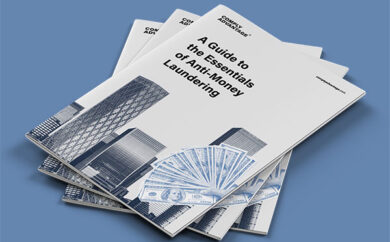

In Luxembourg, three main national regulatory authorities are responsible for supervising financial products and services: the Luxembourg Ministère des Finances, the Banque centrale du Luxembourg (BCL), and the Commission de Surveillance du Secteur Financier (CSSF).
This article focuses on the CSSF, outlining its role, the entities it regulates, and guidance on how to best meet regulatory obligations and avoid noncompliance penalties.
What is the CSSF?
Luxembourg’s CSSF is the financial regulatory body responsible for supervising the financial sector, which includes banks, investment firms, insurance companies, and other financial service providers. Established in 1998, the CSSF aims to maintain the safety and stability of the financial system in Luxembourg. Its duties encompass licensing financial institutions (FIs), ensuring regulatory compliance, protecting investors, and enforcing market integrity.
The role and obligations of the CSSF
Before the CSSF was established, financial oversight in Luxembourg was fragmented among various authorities: the Institut Monétaire Luxembourgeois (IML), which handled monetary policy and banking regulation, and the Commissariat aux Bourses, which oversaw securities markets. The growing complexity of financial markets and the need for a unified regulatory framework led to the CSSF’s formation under the law of December 23, 1998, which aimed to centralize supervision and adapt to European Union directives.
Today, the CSSF performs several duties:
- The CSSF conducts regular and ad hoc inspections, both on-site and off-site, to assess FIs’ financial health, risk management practices, and regulatory compliance.
- To ensure financial products and services are transparent and consumers are treated fairly, the CSSF handles consumer complaints and mediates disputes between FIs and clients.
- In addition to implementing and enforcing anti-money laundering and counter-terrorist financing (AML/CTF) regulations, the CSSF ensures firms have robust AML systems to detect and report suspicious activities and collaborates with authorities to enhance the effectiveness of anti-financial crime measures.
- The regulator oversees the proper functioning of financial markets and the conduct of market participants. It monitors trading activities to prevent market abuse and ensures accurate and timely market information disclosure.
- To support innovation, the CSSF provides guidance and frameworks to help firms navigate the evolving technological landscape while maintaining regulatory standards. The authority takes a “proactive, flexible” regulatory approach to financial innovation, assessing each project “on the basis of the services effectively provided regardless of the technology used.”
Institutions regulated by the CSSF
The CSSF regulates a wide range of FIs and entities operating in Luxembourg. These institutions include:
Banks and credit institutions:
Investment firms:
Undertakings for collective investment (UCIs):
Specialized Investment Funds (SIFs):
Management companies:
Payment institutions and electronic money institutions:
Pension funds:
|
Insurance and reinsurance companies:
Professionals of the financial sector (PFS):
Market infrastructures:
Audit firms and auditors:
Financial sector professionals under the Law of 5 April 1993:
Information systems and technology service providers:
|
Regulatory framework of the CSSF
The CSSF enforces a robust regulatory framework composed of several key laws and regulations:
- The Law of 5 April 1993 and the Law of 23 December 1998 establish the legal foundation for the operation and supervision of FIs.
- The Law of 12 November 2004 on the fight against money laundering and terrorist financing and CSSF Regulation No. 12-02 outline various AML requirements of FIs, including customer due diligence (CDD), transaction monitoring, and reporting of suspicious activities.
- Regulation (EU) No 596/2014 on market abuse (MAR) seeks to ensure financial markets are fair and transparent by preventing insider trading, market manipulation, and other forms of market abuse.
- The Law of 22 March 2004 ensures the fair treatment and protection of consumers in financial transactions.
- The Law of 10 August 1915 on commercial companies provides the general framework for corporate governance in Luxembourg.
Penalties for non-compliance with CSSF regulations include fines, administrative sanctions, license revocations, and other corrective measures. For example, in May 2024, the CSSF imposed an administrative fine of €3 million on a credit institution for various AML violations relating to managing high-risk clients, including failing to adequately verify the source of funds, insufficiently monitoring transactions, and closing certain accounts without informing the Cellule de Renseignement Financier (Luxembourg’s financial intelligence unit).
Compliance challenges
Frequent updates and amendments to regulations have required firms to continually adapt their compliance strategies. For example:
- The Fourth AML Directive (4AMLD) expanded the scope of enhanced due diligence (EDD) to include domestic politically exposed persons (PEPs) and mandated central registries for beneficial ownership, increasing transparency and scrutiny.
- The Fifth AML Directive (5AMLD) further strengthened these measures by making beneficial ownership information more accessible to the public, extending EDD requirements to cryptocurrency exchanges and prepaid cards, and imposing stricter rules on trusts.
These updates required many firms to increase their investment in staff training, technology upgrades, and the development of new compliance frameworks. Balancing compliance with business agility remains a constant challenge as companies strive to meet regulatory demands without stifling innovation or operational efficiency.
Best practices for firms to comply with CSSF
- Implement sophisticated transaction monitoring solutions
In accordance with CSSF Regulation No. 20-05, obligated entities are required to “implement adequate procedures to detect, monitor, and report suspicious transactions.” Utilizing sophisticated transaction monitoring systems equipped with machine learning algorithms can help firms better identify unusual patterns in real-time. - Strengthen CDD practices
To ensure robust compliance with the CSSF, firms should establish a thorough CDD framework, including verifying customer identities, assessing associated risks, and maintaining ongoing monitoring for suspicious activities. Best practices within CDD involve having access to quality, up-to-date PEP data and applying EDD measures to manage associated risks. - Invest in comprehensive staff training
According to CSSF Circular 19/732, FIs must provide “regular training for all employees on AML/CFT issues.” Tailored training programs for different roles ensure that each staff member understands their specific compliance responsibilities and contributes effectively to the firm’s AML strategy. - Conduct thorough risk assessments and audits
Regulated firms are required to take a risk-based approach to AML/CFT efforts. Employing dynamic risk assessment models that adapt to new threats and changes in the business environment provides a comprehensive overview of potential risks, aligning with CSSF’s expectations.
Get access to 360-degree risk detection in near real-time
ComplyAdvantage’s Mesh platform uses proprietary data to power efficient risk detection across the entire customer lifecycle.
Try Mesh nowOriginally published 07 August 2024, updated 11 February 2025
Disclaimer: This is for general information only. The information presented does not constitute legal advice. ComplyAdvantage accepts no responsibility for any information contained herein and disclaims and excludes any liability in respect of the contents or for action taken based on this information.
Copyright © 2026 IVXS UK Limited (trading as ComplyAdvantage).
